Staurogyne repens is a highly regarded aquarium plant, valued for its vibrant green color and compact growth habit. With thick, coarse leaves, this small plant is ideal for decorating the front and middle sections of an aquarium, creating focal points that attract the observer’s attention. Its ease of cultivation makes it a favorite among aquarists, especially for aquascaping and crafting lush underwater landscapes. Staurogyne repens thrives in various conditions, adding beauty and depth to both beginner and advanced setups.
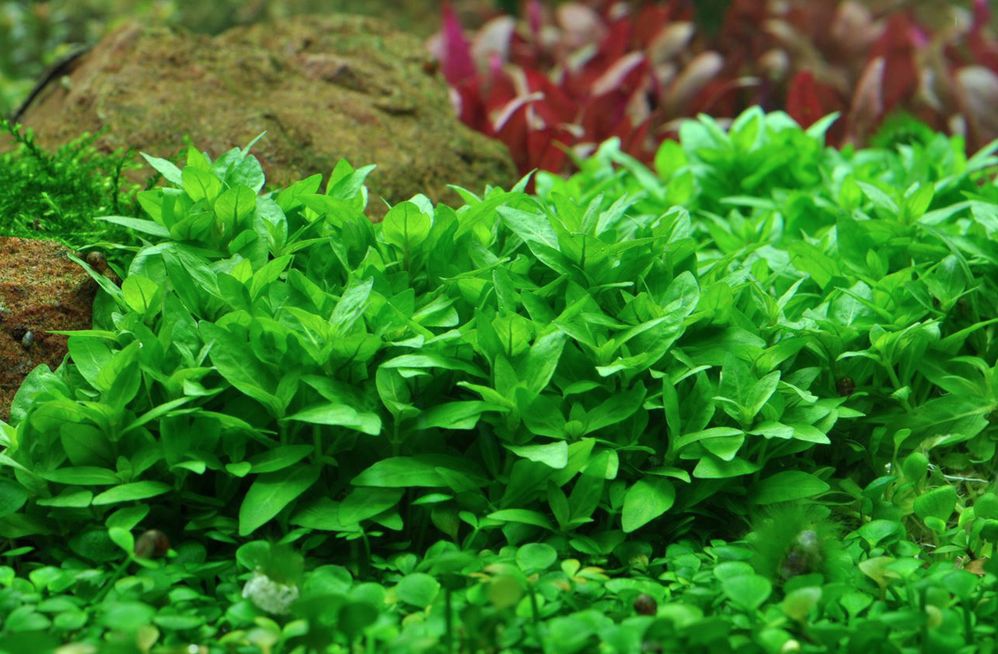
Contents
Plant Habitat in the wild
Staurogyne repens, native to the Amazon River basin in Brazil, particularly in the states of Amazonas, Pará, and Rondônia, thrives in streams, rivers, and small water bodies. This plant typically grows submerged but can also be found partially emerging along the banks, making it adaptable to its habitat. As an understory plant, it prefers moderate light conditions, tolerating both lower and brighter light levels; however, excessive light can lead to legginess and a less compact appearance.
Since gaining popularity in aquariums around 2005, Staurogyne repens continues to attract aquarists for its high decorative appeal and ease of care. Its versatility allows it to enhance a variety of aquarium setups, making it a favored choice for both beginners and experienced hobbyists.
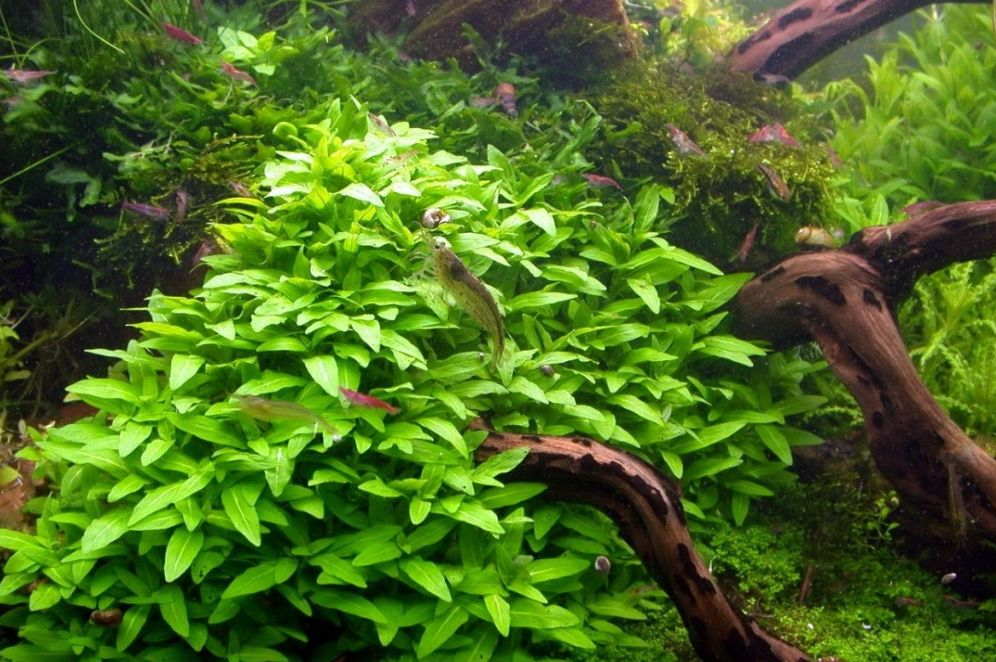
Description
Staurogyne repens is characterized by its small, oval-shaped leaves that grow in pairs along creeping stems, arranged in an alternate pattern. The leaves typically display a bright green hue, providing a vibrant and fresh appearance. Under certain lighting conditions, the plant can also exhibit reddish hues, adding to its visual appeal.
The shoots of Staurogyne repens can reach up to 10 cm in height and 5-10 cm in width. Each leaf lamina measures approximately 4.5 cm and retains its oval shape. The stems are coarse and highly branched, trailing along the substrate and enhancing its ability to create a lush carpet effect.
When provided with optimal conditions, Staurogyne repens develops a dense, carpet-like mat as its stems grow laterally, spreading horizontally across the substrate. This compact growth habit makes it an excellent choice for foreground or midground planting, creating a visually appealing landscape in any aquarium setup.
| Characteristics | Details |
|---|---|
| Scientific Name | Staurogyne repens |
| Common Name | Staurogyne, repens plant |
| Family | Acanthaceae |
| Native Range | Brazil, Amazon River basin |
| Growth Habit | Submerged aquatic plant |
| Leaf Shape | Small, oval-shaped |
| Leaf Color | Bright green with potential reddish hues |
| Growth Rate | Slow to moderate |
| Height | 5-10 cm (2-4 inches) |
| Spread | Lateral spreading to form a carpet |
| Lighting Requirement | Moderate to high intensity |
| Temperature Range | 22-28°C (72-82°F) |
| pH Preference | Slightly acidic to neutral (pH 6.0-7.5) |
| Water Hardness | Adaptable to a range of water hardness |
| Substrate | Nutrient-rich substrate or inert substrates |
| CO2 Requirement | Not mandatory but beneficial for growth |
| Propagation Methods | Stem cutting or replanting, individual stems |
| Ideal Placement | Foreground or midground in aquascapes |
| Compatibility | Suitable for various tankmates |
| Maintenance | Regular trimming and control of growth |
| Ecological Role | Provides shelter and contributes to water quality |
| Aquascaping Use | Creating lush carpeting in underwater landscapes |
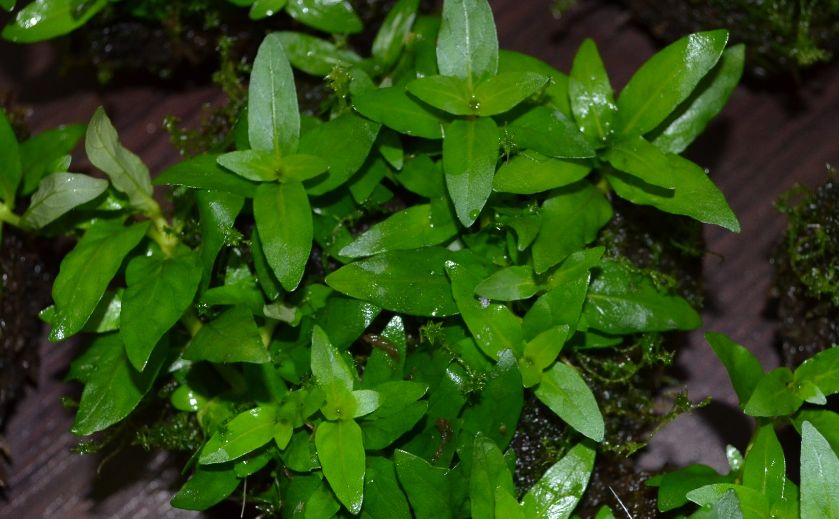
Difficulties in keeping
Staurogyne repens is a relatively new addition to the aquarium hobby, celebrated for its thick green leaves and coarse brown stems. This plant has a slower growth rate compared to others, which means it requires less frequent trimming, making it a low-maintenance option. Staurogyne repens grows horizontal stems that consistently strike roots, forming a thick, low carpet of green. It is an enduring plant that can thrive even under low lighting conditions for extended periods. However, if it receives insufficient light, nutrients, or CO2, it may lose its decorative qualities, becoming less vibrant and compact.
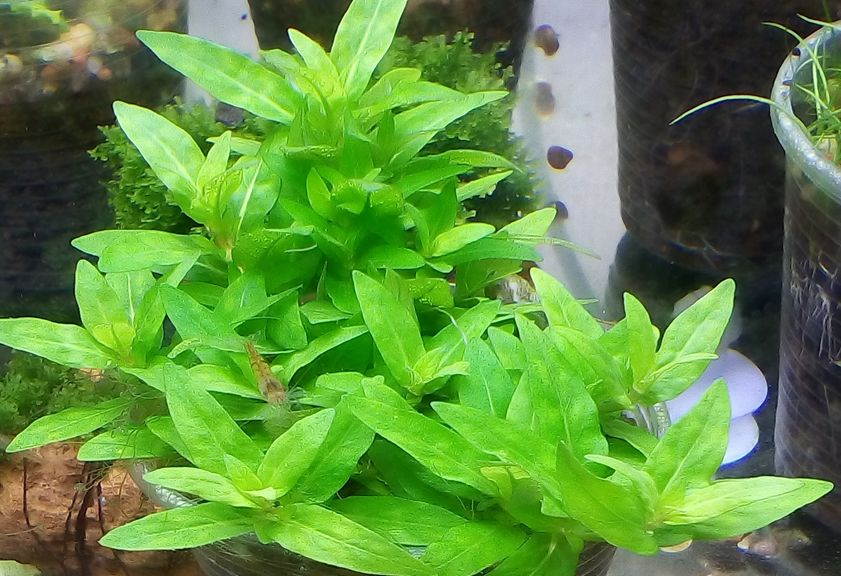
How to plant staurogyne repens
Staurogyne repens is primarily used in aquariums as a ground-covering plant, ideal for the front and middle sections of a tank. In smaller nano tanks, it can also be positioned in the back. To enhance its decorative appeal, it’s recommended to plant Staurogyne repens in small groups among driftwood or roots. Regular trimming, particularly of the stem tips, helps maintain its compact shape.
To create a lush green carpet in the front of the tank, start by trimming the long stems and cutting them into 2-4 smaller pieces. Plant these pieces closely together, forming small clusters across the substrate. After an adaptation period, the plant will begin to grow horizontal stems, creating the desired carpet effect. It looks especially vibrant when positioned in the foreground.
Due to its slow growth rate, trimming can be done every 2-3 months, which helps the plant maintain its initial decorative appearance for longer. Staurogyne repens thrives under conditions similar to those of Hemianthus callitrichoides, making them compatible tank mates. However, ensure a minimum distance of 15-20 cm between plant shoots to promote healthy growth.
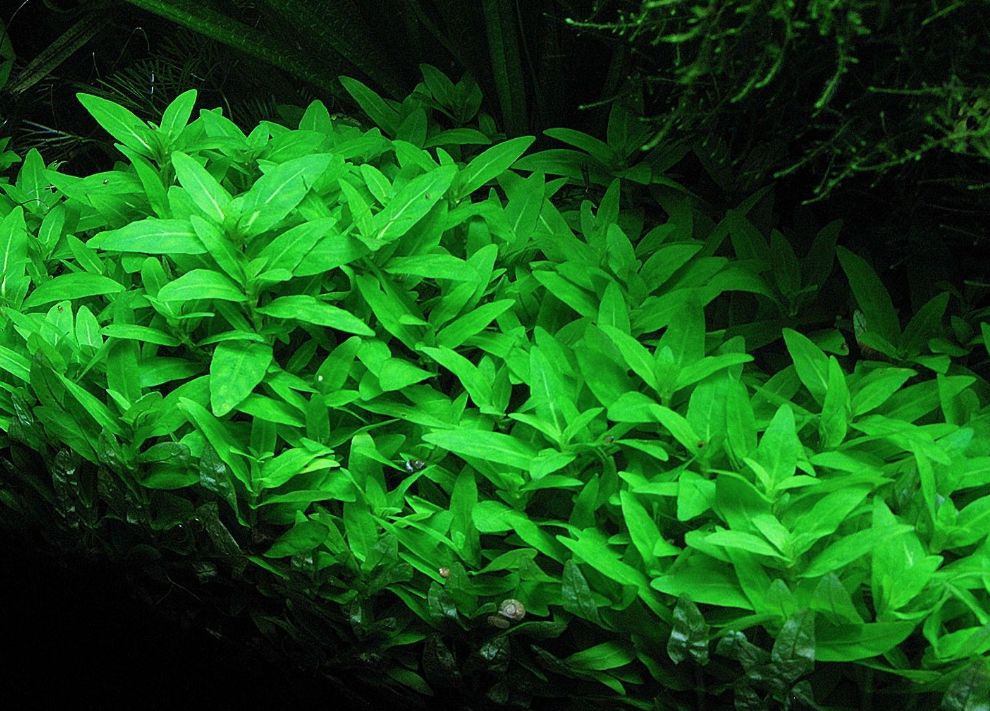
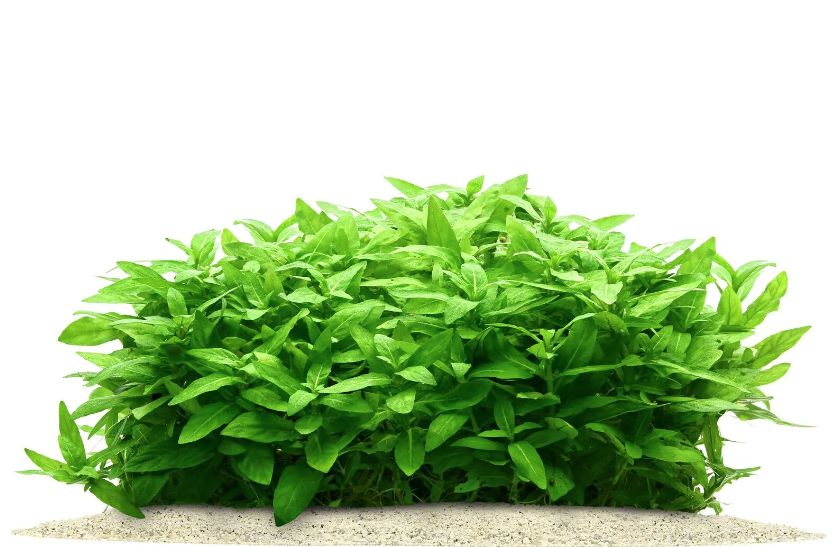
Care In A Tank
Lighting Requirements
Staurogyne repens has versatile lighting requirements, allowing it to adapt to various light intensities. While it can thrive in lower light levels, this may result in more elongated growth and reduced color vibrancy. In low-light conditions, the plant can still grow, but it may not form as dense a carpet, requiring more frequent trimming to maintain its shape.
For optimal growth, a medium to high lighting level is recommended. A photoperiod of 8 to 10 hours of light per day is ideal, as this duration allows the plant to perform photosynthesis effectively while also providing necessary rest time, which helps prevent excessive algae growth.
If you notice leggy growth or stretching toward the light source, it may indicate inadequate light intensity. In such cases, consider increasing the light intensity or adjusting the light fixture’s position to ensure sufficient illumination reaches the plant. Using full-spectrum LED lights can further enhance growth and color development.
Water Parameters
Staurogyne repens is a forgiving plant that can adapt to a wide range of water parameters, making it suitable for various freshwater aquariums. It thrives best in tropical conditions, with temperatures ranging from 22-28°C (72-82°F). While it can tolerate slight temperature fluctuations, it prefers a stable environment, with an optimal temperature of 24-26°C. Abrupt drops in temperature can slow its already slow growth rate.
The plant is also adaptable to varying water hardness, tolerating both soft and moderately hard conditions. Aim for a general hardness (GH) level of 4-12 dGH, with an optimal range of 6-8 dGH. Staurogyne repens typically grows to a height of 3-10 cm and a width of 5-10 cm, making it a compact choice for aquascaping.
CO2 Requirements
While Staurogyne repens is a resilient plant, it exhibits a positive response to CO2 supplementation. It can thrive without CO2 injection, particularly in low to moderate light setups. However, in high-light conditions or when aiming for more vibrant coloration and accelerated growth, CO2 enrichment can be highly beneficial. CO2 injection enhances photosynthesis, leading to faster growth rates and improved leaf color and health.
Nutrients
Providing a consistent supply of fertilizers significantly boosts the growth rate of Staurogyne repens. Regular fertilization leads to greener, brighter, and sometimes glossy leaves. It is crucial to ensure an adequate supply of both macronutrients—such as nitrogen, phosphorus, and potassium—and micronutrients like iron and magnesium for optimal health. These nutrients can be supplied through regular dosing of liquid fertilizers or substrate fertilizers, as well as nutrient-rich substrates like aquasoil.